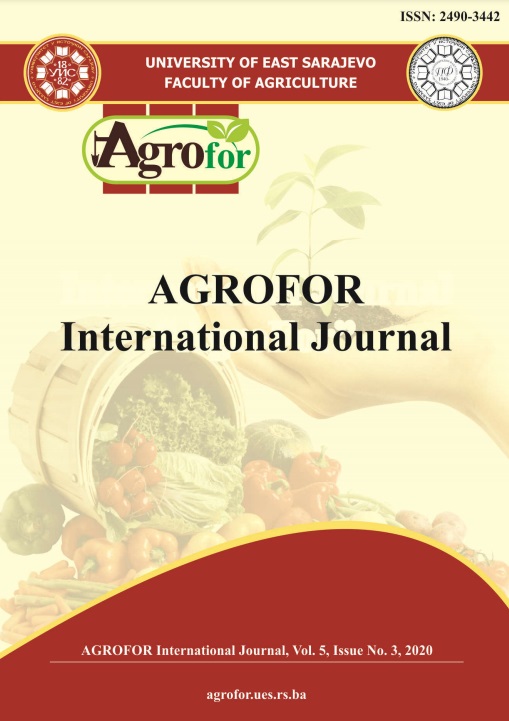CHIPILÍN BIOMASS PRODUCTION OF Crotalaria longirostrata Hook & Arn UNDER DIFFERENT FORMULATIONS OF FERTILIZATION AND SOLAR RADIATION LEVELS
DOI:
https://doi.org/10.7251/AGRENG2003132RAbstract
Chipilín is a shrub species that grows wild in the tropical areas of Mexico and
whose crude protein content is 31%. It is linked to food culture, mainly of the rural
population. It is frequently found associated among tropical crops. Despite the fact
that it is a plant genetic resource appreciated by rural families, its use continues to
depend essentially on its natural reproduction and collection, perhaps because
almost everything about the agronomic management of the plant is unknown. The
objective of this work was to study the growth response and production of foliar
biomass of Crotalaria longirostrata supplying different fertilization formulations
(N, P and K) and different levels of solar radiation. A 3 x 3 factorial experiment
was carried out, in a completely randomized design. The formulations were 45-30-
26, 17-00-00 and 00-00-00, and the radiation levels were 50%, 65% and 100%,
resulting in 9 treatments with 8 repetitions; and as an experimental unit a pot with a
plant was considered. The results indicate significant differences (p <0.05) between
formulations, and solar radiation levels for all the variables considered, such as
basal stem diameter, number of lateral branches, dry biomass of stem, leaf and
root. In all cases the formulation 45-30-26 turned out to be better, for example at
100 days the amount of dry leaf biomass was 17.5 grams per plant, while with the
formulations of 17-00-00 and 00-00 -00 was 6.0 and 3.5 grams per plant
respectively. In the case of solar radiation, 15.0, 8.0 and 3.0 grams were obtained
for 100%, 65% and 50% respectively. Therefore it is concluded that the best
formulation and percentage of solar radiation for the production of Crotalaria
longirostrata is 45-30-26 with 100% solar radiation, and that the amount of total
fresh biomass that a plant can produce depends on the basal diameter of its stem.

